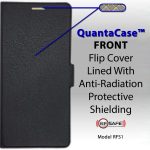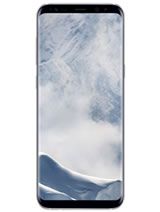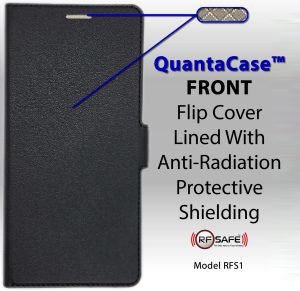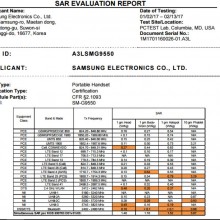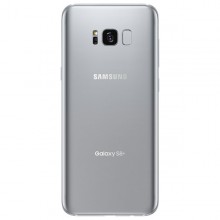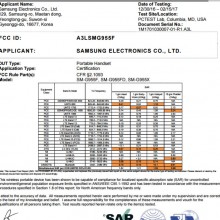Samsung Galaxy S8 Plus Radiation Levels
Head SAR0.41 W/kg which is Ranked #13 at 25.63% of Legal Limit
| Radiation Levels | HEAD (1g) | BODY (1g) | HOTSPOT (1g) |
|---|---|---|---|
| Cellular Only | 0.41 W/kg | 0.97 W/kg | 0 |
| Simultaneous | 1.52 W/kg | 1.21 W/kg | 1.1 W/kg |
Samsung Galaxy S8 Plus SAR Level Summary:
The cellular transmission SAR values for the Samsung Galaxy S8 Plus (FCC ID A3LSMG955F) are 0.41 W/kg (watts per kilogram) at the head and 0.97 W/kg when worn on the body. The simultaneous transmission SAR values for Galaxy S8 Plus (cellular plus Wi-Fi) is 1.52 W/kg at the head, 1.21 W/kg when worn on the body, and 1.10 W/kg when used as a hotspot simultaneously with other transmitters active.
View Thermal Visualization
Samsung Galaxy S8 Plus Safety Tip: Turning Off Wi-Fi and Bluetooth Reduces Radiation.
This SAR chart reveals how turning off Wi-Fi and Bluetooth on your Samsung Galaxy S8 Plus can significantly reduce your exposure to radiation. Our SAR comparison chart shows that by simply turning off these transmitters, you can lower the RF radiation exposure to your head by 73%, and you can lower exposure to the body by 19.8%, when considering these differences between cellular-only (Wi-Fi/Bluetooth OFF) and simultaneous use exposure (Wi-Fi/Bluetooth ON), a wise way to reduce excessive phone radiation is to tap off unnecessary transmitters when not in use. Additionally, when using your phone as a hotspot, turning off Bluetooth can reduce your exposure by up to % according to the FCC SAR report for device number A3LSMG955F.
Samsung Galaxy S8 Plus SAR Levels
| RADIATION LEVELS | CELLULAR ONLY | (% DIFF) | SIMULTANEOUS |
|---|---|---|---|
| HEAD | 0.41 W/kg | 73% | 1.52 W/kg |
| BODY | 0.97 W/kg | 19.8% | 1.21 W/kg |
| HOTSPOT | W/kg | % | 1.10 W/kg |
The Specific Absorption Rate (SAR) of a mobile device measures the amount of radio frequency energy absorbed by the body during device usage.
The SAR values for the galaxy-s8-plus (FCC ID A3LSMG955F) are as follows:
- 0.41 W/kg when held at the head with cellular transmission only
- 0.97 W/kg when worn on the body with cellular transmission only
- 1.52 W/kg when held at the head with simultaneous cellular and Wi-Fi transmission
- 1.21 W/kg when worn on the body with simultaneous cellular and Wi-Fi transmission
- 1.10 when used as a Hotspot simultaneously with other transmitters active.
Samsung Galaxy S8 Plus - SAR Levels
FCC SAR Levels
- FCC Approval Date This is the date the phone SAR test was completed before the phone's release to the public as required by law. 10 March 2017
- FCC ID The FCC ID is the code used to register a device for FCC compliance A3LSMG955F
- FCC Report Link A direct link to the FCC's website for confirming SAR levels that are listed on our website - We did the homework for you!
- US SAR Ratings USA Legal Limit is 1.6 W/kg Minimum Separation Distance for Galaxy S8 Plus is 15mm - USA Legal Limit is 1.6 W/kg - FCC SAR testing is measured in watts per kilogram (or W/kg) averaged over ONE gram of simulated biological tissue. It is a well known FACT SAR testing was not designed for protecting women or children from harmful radiation exposure, and SAR Test do not take into consideration health effects below thermal levels
- Head SAR Level SAR test when held against your head when only using cellular service. Wifi and other transmitter are NOT active 0.41 W/kg
- Body SAR Level SAR test when held against your body only using cellular service. Wifi and other transmitter are NOT active 0.97 W/kg
- Simultaneous Transmission The highest possible SAR recorded with ALL transmitters active, Cellular, WiFi, and Hotspot 1.59 W/kg - Hotspot Active
- Simultaneous Head The highest possible SAR test when held against your HEAD with cellular and WiFi transmitters active, 1.52 W/kg
- Simultaneous Body The highest possible SAR test when held against your BODY with cellular and WiFi transmitters active, 1.21 W/kg
- Hotspot SAR The highest possible SAR test when held against your BODY using the phone as a hotspot with cellular and WiFi transmitters active, 1.10 W/kg
EU SAR Level
- EU SAR Ratings EU Legal Limit is 2.0 W/kg
- Head SAR Level 0.27 W/kg (head)
- Body SAR Level 1.00 W/kg (body)
According to test reports filed with the Federal Communications Commission (FCC), the Specific Absorption Rate (SAR) for the Samsung Galaxy S8 Plus is 0.41 watts per kilogram (w/kg) at your head, and 0.97 w/kg when worn on your body. The Samsung Galaxy S8 Plus hotspot SAR is 1.10 w/kg. The SAR for simultaneous transmission (cellular,Wi-Fi and bluetooth) for the Samsung Galaxy S8 is 1.52 w/kg at your head, 1.21 w/kg when worn on the body, and 1.59 w/kg when used as a hotspot simultaneously with all other transmitters active.
All SAR levels reported for the Samsung Galaxy S8 Plus to the FCC are averaged over one gram of body tissue corresponding to the maximum allowable level of 1.6 w/kg. The SAR levels will vary depending upon your specific cell phone carrier (e.g., AT&T, Sprint, T-Mobile, or Verizon).
The Samsung Galaxy S8 Plus minimum separation distance for body-worn testing was 15 mm, that requires a smartphone user to maintain over 1/2 inch minimum separation (15 mm = 0.59 in) for SAR safety compliance.

